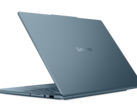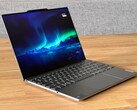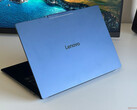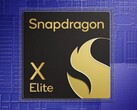Lenovo Yoga Slim 7x 14 G9 review - Multimedia laptop with Snapdragon X Elite and great 3K OLED display
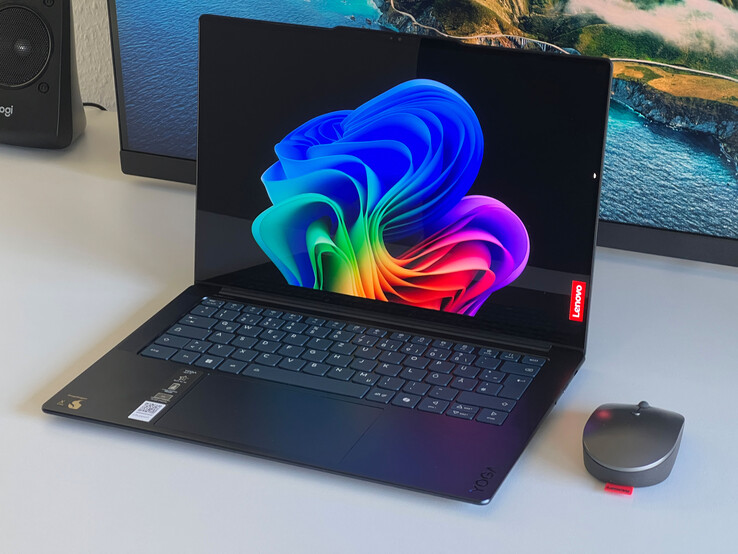
Lenovo currently offers two laptops with the new Qualcomm ARM processors. In addition to the ThinkPad T14s G6 for business customers, the manufacturer also offers the Yoga Slim 7x 14 G9 for private customers. This is a multimedia laptop with a 14.5-inch 3K OLED touchscreen and a 90 Hz refresh rate. The only processor available is the slowest Snapdragon X Elite (X1E-78-100) without dual-core Turbo.
The basic model with 16 GB of RAM and a 512-GB SSD costs 1,399 Euros (~$1,533), and our test unit with 32 GB of RAM and a 1-TB SSD comes with a suggested retail price of 1,599 Euros (~$1,752). This version (incl. Windows 11 Home) is also available in Lenovo's Campus program for 1,399 Euros (~$1,533).
Possible Competitors in Comparison
Rating | Version | Date | Model | Weight | Height | Size | Resolution | Price |
|---|---|---|---|---|---|---|---|---|
| 86.4 % | v8 | 08 / 2024 | Lenovo Yoga Slim 7X 14Q8X9 SD X Elite X1E-78-100, Adreno X1-85 3.8 TFLOPS | 1.3 kg | 15 mm | 14.50" | 2944x1840 | |
| 82.7 % | v8 | 08 / 2024 | Medion SPRCHRGD 14 S1 Elite SD X Elite X1E-78-100, Adreno X1-85 3.8 TFLOPS | 1.4 kg | 16.9 mm | 14.00" | 2880x1800 | |
| 85.5 % | v8 | 07 / 2024 | Xiaomi RedmiBook Pro 14 2024 Ultra 7 155H, Arc 8-Core | 1.4 kg | 15.9 mm | 14.00" | 2880x1800 | |
| 85.1 % | v8 | 07 / 2024 | Schenker VIA 14 Pro (M24) R7 8845HS, Radeon 780M | 1.4 kg | 18.5 mm | 14.00" | 2880x1800 | |
| 89 % v7 (old) | v7 (old) | 06 / 2024 | Huawei MateBook X Pro 2024 Ultra 9 185H, Arc 8-Core | 980 g | 13.5 mm | 14.20" | 3120x2080 | |
| 88.6 % v7 (old) | v7 (old) | 05 / 2024 | Asus Zenbook 14 OLED UM3406HA R7 8840HS, Radeon 780M | 1.2 kg | 14.9 mm | 14.00" | 1920x1200 | |
| 87.4 % v7 (old) | v7 (old) | 04 / 2024 | Samsung Galaxy Book4 Pro 14 Ultra 7 155H, Arc 8-Core | 1.2 kg | 11.6 mm | 14.00" | 2880x1800 | |
| 88.3 % v7 (old) | v7 (old) | 03 / 2024 | Lenovo Yoga Slim 7 14IMH9 Ultra 7 155H, Arc 8-Core | 1.4 kg | 14.9 mm | 14.00" | 1920x1200 |
Note: Since we recently updated our rating system, the results from version 8 are not comparable anymore with those from version 7. You can find additional information on this here.
Case - Aluminum in Cosmic Blue
The Yoga Slim 7x follows the current designs of the Lenovo laptops including the camera bulge that doesn't look particularly attractive. The laptop is exclusively available in the color Cosmic Blue, which either looks very dark (almost black) or vibrant blue, depending on the angle of the light. The color reminds us of the Midnight color versions of the current MacBook Air models, including their being susceptible to showing fingerprints.
The case is made of aluminum and both the stability and workmanship turn out very good. The base unit is very stable and there are no creaking noises here. But the same isn't the case for the hinges, since opening the display lid always produces some slight creaking noises - at least in our test unit. The hinges themselves are adjusted well and only allow for some slight wobbling. The maximum opening angle is 165 degrees. Although the display lid is thin, it is still very stable.
Lenovo specifies a thickness of 12.9 mm (~0.5 in), but this is only true for the front of the base unit. It is 15 mm (~0.6 in) in the back, which Lenovo should also specify. This places the Slim 7x in the middle of the field of comparison devices, even though with its 14.5-inch display it is also one of the widest. The weight is almost 1.3 kg (~2.9 lb), with the compact 65-Watt charger adding another 324 grams (~11.4 oz).
Equipment - Slim 7x exclusively with USB-C
Lenovo has equipped the Slim 7x exclusively with USB-C ports (USB 4.0), even forgoing a 3.5-mm audio port. But at least you can charge the laptop on either side.
Communication
Like all the current Snapdragon devices, the Yoga Slim 7x is also equipped with the FastConnect 7800 module, which already supports Wi-Fi 7. In combination with our reference router from Asus, the transfer rates are very good overall, and we didn't run into any problems at all with the signal quality during our testing period.
| Networking | |
| Lenovo Yoga Slim 7X 14Q8X9 | |
| iperf3 transmit AXE11000 | |
| iperf3 receive AXE11000 | |
| iperf3 transmit AXE11000 6GHz | |
| iperf3 receive AXE11000 6GHz | |
| Medion SPRCHRGD 14 S1 Elite | |
| iperf3 transmit AXE11000 6GHz | |
| iperf3 receive AXE11000 6GHz | |
| Xiaomi RedmiBook Pro 14 2024 | |
| iperf3 transmit AXE11000 | |
| iperf3 receive AXE11000 | |
| Schenker VIA 14 Pro (M24) | |
| iperf3 transmit AXE11000 | |
| iperf3 receive AXE11000 | |
| Huawei MateBook X Pro 2024 | |
| iperf3 transmit AXE11000 | |
| iperf3 receive AXE11000 | |
| Asus Zenbook 14 OLED UM3406HA | |
| iperf3 transmit AXE11000 | |
| iperf3 receive AXE11000 | |
| Samsung Galaxy Book4 Pro 14 | |
| iperf3 transmit AXE11000 | |
| iperf3 receive AXE11000 | |
| Lenovo Yoga Slim 7 14IMH9 | |
| iperf3 transmit AXE11000 | |
| iperf3 receive AXE11000 | |
| iperf3 transmit AXE11000 6GHz | |
| iperf3 receive AXE11000 6GHz | |
Webcam
The top edge of the display lid houses a 1080p webcam that creates recordings of average quality. The studio effects from Windows are of course also supported. In addition, there is also an electronic shutter and an IR module for face recognition via Windows Hello.

Accessories
The box includes a 4-in-1 docking station that offers a regular USB-A port, an HDMI port, a VGA port, and a 3.5-mm audio port. While this can really make sense during stationary operation, having the corresponding connections on the laptop directly would of course be more practical on the road.
Maintenance
The bottom case cover is fastened with only four Torx screws and can be removed easily. Inside, you get access to the screwed-in battery, the two fans, and the M.2-2242 SSD. The WLAN module also appears to be replaceable, but it is covered by a cooling unit that would have to be removed first. The working memory is soldered and cannot be replaced or expanded.
Sustainability
Lenovo advertises a CO2 offset of 0.5 tons, and the laptop is also EPEAT Gold certified. On the other hand, at 1.3 watts the standby consumption is too high and should still be improved via update. The packaging mainly consists of recyclable nature-based materials, and the manufacturer also says that the packaging is kept as compact as possible.
Input Devices - Comfortable Yoga keyboard
There are no surprises with the keyboard, and Lenovo uses the same keyboard we already know from other Yoga models. Thanks to a sufficiently long and precise stroke, the typing experience is very comfortable. Only the larger keys tend to produce some slight clattering. While the small arrow keys are less than optimal, otherwise there are no problems with the layout. There is a two-step white keyboard illumination that can also be activated automatically via the brightness sensor.
With a footprint of 13.5 x 8 cm (~5.3 x 3.14 in), the ClickPad offers sufficient space for cursor movements, and the sliding characteristics are very good. The pad can be clicked in the bottom half, but the clicking noise is very loud. The capacitive touchscreen is also available for inputs.
Display - 3K OLED with 90 Hz
The highly reflective OLED touchscreen impresses with a high resolution of 2944x1840 pixels and a subjectively great image quality. In contrast to many other OLED touchscreens, there is no grid effect in bright areas here. The colors look extremely vibrant, black is saturated, movements look very smooth thanks to the 90 Hz refresh rate, and the response times are very fast. Both the brightness and the color temperature can be adjusted automatically to the surrounding light conditions.
Lenovo specifies a brightness of 500 cd/m² in SDR operation, but our test unit barely misses this with 475 cd/m² on average. Thanks to the low black value, the maximum contrast is extremely high, as is typical for OLED displays. We determine a maximum HDR brightness of 986 cd/m² in a small image area and 824 cd/m² with an almost completely white image. With this, the Yoga reaches significantly higher brightness values than the current OLED panels from Samsung, with only the OLED panel of MateBook X Pro (120 Hz) being even brighter.
| |||||||||||||||||||||||||
Brightness Distribution: 97 %
Center on Battery: 472 cd/m²
Contrast: ∞:1 (Black: 0 cd/m²)
ΔE ColorChecker Calman: 1.4 | ∀{0.5-29.43 Ø4.78}
ΔE Greyscale Calman: 2 | ∀{0.09-98 Ø5}
90.8% AdobeRGB 1998 (Argyll 3D)
100% sRGB (Argyll 3D)
97.3% Display P3 (Argyll 3D)
Gamma: 2.21
CCT: 6493 K
| Lenovo Yoga Slim 7X 14Q8X9 LEN145WQ+, OLED, 2944x1840, 14.5", 90 Hz | Medion SPRCHRGD 14 S1 Elite CSOT MNE007ZA3-2, IPS, 2880x1800, 14", 120 Hz | Xiaomi RedmiBook Pro 14 2024 MNE007ZA3-2, IPS, 2880x1800, 14", 120 Hz | Schenker VIA 14 Pro (M24) TL140ADXP24-0, IPS, 2880x1800, 14", 120 Hz | Huawei MateBook X Pro 2024 VisN236HUZ15, OLED, 3120x2080, 14.2", 120 Hz | Asus Zenbook 14 OLED UM3406HA ATNA40CT02-0, OLED, 1920x1200, 14", 60 Hz | Samsung Galaxy Book4 Pro 14 ATNA40CU07-0, OLED, 2880x1800, 14", 120 Hz | Lenovo Yoga Slim 7 14IMH9 LEN140WUXGA, OLED, 1920x1200, 14", 60 Hz | |
|---|---|---|---|---|---|---|---|---|
| Display | -15% | -16% | -17% | 2% | -1% | -2% | 3% | |
| Display P3 Coverage (%) | 97.3 | 74.4 -24% | 70.3 -28% | 70.1 -28% | 99.8 3% | 98.6 1% | 97 0% | 99.8 3% |
| sRGB Coverage (%) | 100 | 99.7 0% | 99.7 0% | 97.7 -2% | 100 0% | 99.9 0% | 100 0% | 100 0% |
| AdobeRGB 1998 Coverage (%) | 90.8 | 71.7 -21% | 72.1 -21% | 72.3 -20% | 94.6 4% | 87.3 -4% | 85.2 -6% | 97.3 7% |
| Response Times | -4414% | -5163% | -5091% | -31% | -153% | -55% | -290% | |
| Response Time Grey 50% / Grey 80% * (ms) | 0.39 ? | 28.4 ? -7182% | 32.7 ? -8285% | 31.1 ? -7874% | 0.75 ? -92% | 1.31 ? -236% | 0.83 ? -113% | 1.78 ? -356% |
| Response Time Black / White * (ms) | 0.71 ? | 12.4 ? -1646% | 15.2 ? -2041% | 17.1 ? -2308% | 0.49 ? 31% | 1.2 ? -69% | 0.69 ? 3% | 2.3 ? -224% |
| PWM Frequency (Hz) | 360 ? | 1440 | 480 ? | 240 ? | 489.7 ? | |||
| PWM Amplitude * (%) | 30 | |||||||
| Screen | -14% | -1% | -40% | 7% | 11% | -3% | -50% | |
| Brightness middle (cd/m²) | 472 | 395 -16% | 418 -11% | 466 -1% | 613 30% | 387 -18% | 392 -17% | 388.3 -18% |
| Brightness (cd/m²) | 475 | 387 -19% | 408 -14% | 467 -2% | 624 31% | 386 -19% | 398 -16% | 388 -18% |
| Brightness Distribution (%) | 97 | 90 -7% | 90 -7% | 94 -3% | 93 -4% | 98 1% | 97 0% | 97 0% |
| Black Level * (cd/m²) | 0.33 | 0.3 | 0.29 | 0.01 | ||||
| Colorchecker dE 2000 * | 1.4 | 1.86 -33% | 1.6 -14% | 2.5 -79% | 1.9 -36% | 1 29% | 1.3 7% | 4.4 -214% |
| Colorchecker dE 2000 max. * | 4.1 | 3.48 15% | 2.5 39% | 6.1 -49% | 3.1 24% | 2.4 41% | 3.2 22% | 7.37 -80% |
| Greyscale dE 2000 * | 2 | 2.52 -26% | 2 -0% | 4.1 -105% | 2.1 -5% | 1.4 30% | 2.3 -15% | 1.4 30% |
| Gamma | 2.21 100% | 2.35 94% | 2.14 103% | 2.24 98% | 2.2 100% | 2.24 98% | 2.24 98% | 2.24 98% |
| CCT | 6493 100% | 6999 93% | 6851 95% | 7386 88% | 6447 101% | 6466 101% | 6517 100% | 6339 103% |
| Contrast (:1) | 1197 | 1393 | 1607 | 38700 | ||||
| Colorchecker dE 2000 calibrated * | 1.86 | 1.1 | 1.3 | 1.5 | 0.64 | |||
| Total Average (Program / Settings) | -1481% /
-814% | -1727% /
-944% | -1716% /
-952% | -7% /
-1% | -48% /
-22% | -20% /
-12% | -112% /
-79% |
* ... smaller is better
The X-Rite Color Assistant, which offers various color profiles, is preinstalled on the Yoga Slim 7x. The P3 profile is already very well calibrated, with all the color deviations below the important target value of 3. Only the grayscale deviation at full brightness is a slight outlier, although there is no color tint and the color temperature is also suitable. Additionally, an accurate sRGB profile is also available. The AdobeRGB profile shows slightly higher deviations, and the AdobeRGB color space is only covered to almost 91%.
Display Response Times
| ↔ Response Time Black to White | ||
|---|---|---|
| 0.71 ms ... rise ↗ and fall ↘ combined | ↗ 0.39 ms rise | |
| ↘ 0.32 ms fall | ||
| The screen shows very fast response rates in our tests and should be very well suited for fast-paced gaming. In comparison, all tested devices range from 0.1 (minimum) to 240 (maximum) ms. » 1 % of all devices are better. This means that the measured response time is better than the average of all tested devices (20.2 ms). | ||
| ↔ Response Time 50% Grey to 80% Grey | ||
| 0.39 ms ... rise ↗ and fall ↘ combined | ↗ 0.21 ms rise | |
| ↘ 0.18 ms fall | ||
| The screen shows very fast response rates in our tests and should be very well suited for fast-paced gaming. In comparison, all tested devices range from 0.165 (minimum) to 636 (maximum) ms. » 0 % of all devices are better. This means that the measured response time is better than the average of all tested devices (31.6 ms). | ||
Screen Flickering / PWM (Pulse-Width Modulation)
| Screen flickering / PWM detected | 360 Hz Amplitude: 30 % | ≤ 90 % brightness setting | |
The display backlight flickers at 360 Hz (worst case, e.g., utilizing PWM) Flickering detected at a brightness setting of 90 % and below. There should be no flickering or PWM above this brightness setting. The frequency of 360 Hz is relatively high, so most users sensitive to PWM should not notice any flickering. However, there are reports that some users are still sensitive to PWM at 500 Hz and above, so be aware. In comparison: 53 % of all tested devices do not use PWM to dim the display. If PWM was detected, an average of 8118 (minimum: 5 - maximum: 343500) Hz was measured. | |||
Performance - Snapdragon X Elite and 32 GB RAM
The Yoga Slim 7x is delivered exclusively with the basic Snapdragon X-Elite (X1E-78-100) that doesn't offer a dual-core Turbo. Depending on the model, there are either 16 or 32 GB of RAM (LPDDR5x-8448) that cannot be expanded.
Test Conditions
Lenovo doesn't offer its own power profiles. We ran the benchmarks and measurements below in the Best Performance Windows mode.
Processor - X1E-78-100
The X1E-78-100 is the smallest Snapdragon X-Elite processor. It doesn't offer dual-core Turbo. The maximum clock speed of the 12 cores is 3.4 GHz, and the processor in the Slim 7x is able to maintain this for about one minute. It is not possible to read the TDP with the Snapdragon chips, but considering the power consumption it should be about 50-55 watts at 3.4 GHz. After one minute, the clock speed begins to vary between 2.7 and 3.0 GHz, which corresponds to about 35-45 watts. In the native benchmarks, the performance is therefore very good. In battery operation, the multi-core performance drops by about 10%.
| Cinebench 2024 / CPU Multi Core | |
| Lenovo Yoga Slim 7X 14Q8X9 | |
| Xiaomi RedmiBook Pro 14 2024 | |
| Schenker VIA 14 Pro (M24) | |
| Average Qualcomm Snapdragon X Elite X1E-78-100 (746 - 1132, n=9) | |
| Huawei MateBook X Pro 2024 | |
| Medion SPRCHRGD 14 S1 Elite | |
| Asus Zenbook 14 OLED UM3406HA | |
| Average of class Subnotebook (148 - 1162, n=72, last 2 years) | |
| Cinebench 2024 / CPU Single Core | |
| Average of class Subnotebook (35 - 173, n=55, last 2 years) | |
| Huawei MateBook X Pro 2024 | |
| Medion SPRCHRGD 14 S1 Elite | |
| Lenovo Yoga Slim 7X 14Q8X9 | |
| Average Qualcomm Snapdragon X Elite X1E-78-100 (102.8 - 108, n=6) | |
| Schenker VIA 14 Pro (M24) | |
| Xiaomi RedmiBook Pro 14 2024 | |
| Asus Zenbook 14 OLED UM3406HA | |
| Geekbench 6.5 / Multi-Core | |
| Medion SPRCHRGD 14 S1 Elite | |
| Average Qualcomm Snapdragon X Elite X1E-78-100 (12971 - 14767, n=9) | |
| Lenovo Yoga Slim 7X 14Q8X9 | |
| Huawei MateBook X Pro 2024 | |
| Xiaomi RedmiBook Pro 14 2024 | |
| Schenker VIA 14 Pro (M24) | |
| Schenker VIA 14 Pro (M24) | |
| Average of class Subnotebook (2244 - 17489, n=83, last 2 years) | |
| Lenovo Yoga Slim 7 14IMH9 | |
| Samsung Galaxy Book4 Pro 14 | |
| Asus Zenbook 14 OLED UM3406HA | |
| Geekbench 6.5 / Single-Core | |
| Average of class Subnotebook (960 - 3820, n=77, last 2 years) | |
| Schenker VIA 14 Pro (M24) | |
| Schenker VIA 14 Pro (M24) | |
| Asus Zenbook 14 OLED UM3406HA | |
| Huawei MateBook X Pro 2024 | |
| Lenovo Yoga Slim 7X 14Q8X9 | |
| Medion SPRCHRGD 14 S1 Elite | |
| Average Qualcomm Snapdragon X Elite X1E-78-100 (2354 - 2464, n=6) | |
| Lenovo Yoga Slim 7 14IMH9 | |
| Xiaomi RedmiBook Pro 14 2024 | |
| Samsung Galaxy Book4 Pro 14 | |
In contrast, the situation changes in the emulated benchmarks, where the test unit keeps behaving strangely, which also becomes very clear in our Cinebench R15 loop. In the first few minutes, the clock speed varies considerably, before it stabilizes only later at a high level. This is very unusual, and we have not seen it in any of our Snapdragon test units before. The performance in the emulated benchmarks is therefore relatively weak overall.
Cinebench R15 Multi Constant Load Test
Cinebench R23: Multi Core | Single Core
Cinebench R20: CPU (Multi Core) | CPU (Single Core)
Cinebench R15: CPU Multi 64Bit | CPU Single 64Bit
Blender: v2.79 BMW27 CPU
7-Zip 18.03: 7z b 4 | 7z b 4 -mmt1
HWBOT x265 Benchmark v2.2: 4k Preset
LibreOffice : 20 Documents To PDF
R Benchmark 2.5: Overall mean
| CPU Performance rating | |
| Schenker VIA 14 Pro (M24) | |
| Xiaomi RedmiBook Pro 14 2024 | |
| Huawei MateBook X Pro 2024 | |
| Asus Zenbook 14 OLED UM3406HA | |
| Lenovo Yoga Slim 7 14IMH9 | |
| Samsung Galaxy Book4 Pro 14 | |
| Average of class Subnotebook | |
| Lenovo Yoga Slim 7X 14Q8X9 | |
| Average Qualcomm Snapdragon X Elite X1E-78-100 | |
| Medion SPRCHRGD 14 S1 Elite | |
| Cinebench R23 / Multi Core | |
| Xiaomi RedmiBook Pro 14 2024 | |
| Schenker VIA 14 Pro (M24) | |
| Huawei MateBook X Pro 2024 | |
| Lenovo Yoga Slim 7 14IMH9 | |
| Asus Zenbook 14 OLED UM3406HA | |
| Average of class Subnotebook (1555 - 21812, n=78, last 2 years) | |
| Samsung Galaxy Book4 Pro 14 | |
| Average Qualcomm Snapdragon X Elite X1E-78-100 (8353 - 10960, n=6) | |
| Medion SPRCHRGD 14 S1 Elite | |
| Lenovo Yoga Slim 7X 14Q8X9 | |
| Cinebench R23 / Single Core | |
| Huawei MateBook X Pro 2024 | |
| Schenker VIA 14 Pro (M24) | |
| Xiaomi RedmiBook Pro 14 2024 | |
| Asus Zenbook 14 OLED UM3406HA | |
| Average of class Subnotebook (358 - 2165, n=79, last 2 years) | |
| Lenovo Yoga Slim 7 14IMH9 | |
| Samsung Galaxy Book4 Pro 14 | |
| Medion SPRCHRGD 14 S1 Elite | |
| Lenovo Yoga Slim 7X 14Q8X9 | |
| Average Qualcomm Snapdragon X Elite X1E-78-100 (1111 - 1130, n=6) | |
| Cinebench R20 / CPU (Multi Core) | |
| Xiaomi RedmiBook Pro 14 2024 | |
| Schenker VIA 14 Pro (M24) | |
| Huawei MateBook X Pro 2024 | |
| Lenovo Yoga Slim 7 14IMH9 | |
| Asus Zenbook 14 OLED UM3406HA | |
| Average of class Subnotebook (579 - 8541, n=71, last 2 years) | |
| Samsung Galaxy Book4 Pro 14 | |
| Average Qualcomm Snapdragon X Elite X1E-78-100 (3168 - 4193, n=6) | |
| Medion SPRCHRGD 14 S1 Elite | |
| Lenovo Yoga Slim 7X 14Q8X9 | |
| Cinebench R20 / CPU (Single Core) | |
| Huawei MateBook X Pro 2024 | |
| Schenker VIA 14 Pro (M24) | |
| Asus Zenbook 14 OLED UM3406HA | |
| Xiaomi RedmiBook Pro 14 2024 | |
| Lenovo Yoga Slim 7 14IMH9 | |
| Average of class Subnotebook (128 - 826, n=71, last 2 years) | |
| Samsung Galaxy Book4 Pro 14 | |
| Medion SPRCHRGD 14 S1 Elite | |
| Average Qualcomm Snapdragon X Elite X1E-78-100 (408 - 426, n=6) | |
| Lenovo Yoga Slim 7X 14Q8X9 | |
| Cinebench R15 / CPU Multi 64Bit | |
| Xiaomi RedmiBook Pro 14 2024 | |
| Huawei MateBook X Pro 2024 | |
| Schenker VIA 14 Pro (M24) | |
| Medion SPRCHRGD 14 S1 Elite | |
| Lenovo Yoga Slim 7 14IMH9 | |
| Asus Zenbook 14 OLED UM3406HA | |
| Average Qualcomm Snapdragon X Elite X1E-78-100 (1984 - 2351, n=6) | |
| Samsung Galaxy Book4 Pro 14 | |
| Lenovo Yoga Slim 7X 14Q8X9 | |
| Average of class Subnotebook (327 - 3345, n=74, last 2 years) | |
| Cinebench R15 / CPU Single 64Bit | |
| Schenker VIA 14 Pro (M24) | |
| Asus Zenbook 14 OLED UM3406HA | |
| Huawei MateBook X Pro 2024 | |
| Average of class Subnotebook (72.4 - 322, n=72, last 2 years) | |
| Xiaomi RedmiBook Pro 14 2024 | |
| Lenovo Yoga Slim 7 14IMH9 | |
| Samsung Galaxy Book4 Pro 14 | |
| Lenovo Yoga Slim 7X 14Q8X9 | |
| Average Qualcomm Snapdragon X Elite X1E-78-100 (208 - 216, n=6) | |
| Medion SPRCHRGD 14 S1 Elite | |
| Blender / v2.79 BMW27 CPU | |
| Medion SPRCHRGD 14 S1 Elite | |
| Average Qualcomm Snapdragon X Elite X1E-78-100 (313 - 428, n=6) | |
| Average of class Subnotebook (159 - 2271, n=74, last 2 years) | |
| Lenovo Yoga Slim 7X 14Q8X9 | |
| Samsung Galaxy Book4 Pro 14 | |
| Huawei MateBook X Pro 2024 | |
| Lenovo Yoga Slim 7 14IMH9 | |
| Asus Zenbook 14 OLED UM3406HA | |
| Schenker VIA 14 Pro (M24) | |
| Xiaomi RedmiBook Pro 14 2024 | |
| 7-Zip 18.03 / 7z b 4 | |
| Schenker VIA 14 Pro (M24) | |
| Xiaomi RedmiBook Pro 14 2024 | |
| Asus Zenbook 14 OLED UM3406HA | |
| Lenovo Yoga Slim 7 14IMH9 | |
| Huawei MateBook X Pro 2024 | |
| Lenovo Yoga Slim 7X 14Q8X9 | |
| Samsung Galaxy Book4 Pro 14 | |
| Average of class Subnotebook (11668 - 77867, n=71, last 2 years) | |
| Average Qualcomm Snapdragon X Elite X1E-78-100 (38047 - 49172, n=6) | |
| Medion SPRCHRGD 14 S1 Elite | |
| 7-Zip 18.03 / 7z b 4 -mmt1 | |
| Schenker VIA 14 Pro (M24) | |
| Asus Zenbook 14 OLED UM3406HA | |
| Huawei MateBook X Pro 2024 | |
| Average of class Subnotebook (2643 - 6442, n=73, last 2 years) | |
| Xiaomi RedmiBook Pro 14 2024 | |
| Lenovo Yoga Slim 7 14IMH9 | |
| Samsung Galaxy Book4 Pro 14 | |
| Lenovo Yoga Slim 7X 14Q8X9 | |
| Medion SPRCHRGD 14 S1 Elite | |
| Average Qualcomm Snapdragon X Elite X1E-78-100 (4341 - 4703, n=6) | |
| HWBOT x265 Benchmark v2.2 / 4k Preset | |
| Schenker VIA 14 Pro (M24) | |
| Xiaomi RedmiBook Pro 14 2024 | |
| Asus Zenbook 14 OLED UM3406HA | |
| Lenovo Yoga Slim 7 14IMH9 | |
| Huawei MateBook X Pro 2024 | |
| Average of class Subnotebook (0.97 - 25.1, n=71, last 2 years) | |
| Samsung Galaxy Book4 Pro 14 | |
| Lenovo Yoga Slim 7X 14Q8X9 | |
| Average Qualcomm Snapdragon X Elite X1E-78-100 (6.39 - 7.57, n=6) | |
| Medion SPRCHRGD 14 S1 Elite | |
| LibreOffice / 20 Documents To PDF | |
| Xiaomi RedmiBook Pro 14 2024 | |
| Average Qualcomm Snapdragon X Elite X1E-78-100 (55.1 - 59.7, n=5) | |
| Medion SPRCHRGD 14 S1 Elite | |
| Average of class Subnotebook (38.5 - 220, n=70, last 2 years) | |
| Lenovo Yoga Slim 7X 14Q8X9 | |
| Asus Zenbook 14 OLED UM3406HA | |
| Lenovo Yoga Slim 7 14IMH9 | |
| Samsung Galaxy Book4 Pro 14 | |
| Schenker VIA 14 Pro (M24) | |
| Huawei MateBook X Pro 2024 | |
| R Benchmark 2.5 / Overall mean | |
| Average Qualcomm Snapdragon X Elite X1E-78-100 (0.724 - 0.77, n=6) | |
| Medion SPRCHRGD 14 S1 Elite | |
| Lenovo Yoga Slim 7X 14Q8X9 | |
| Average of class Subnotebook (0.403 - 1.456, n=72, last 2 years) | |
| Samsung Galaxy Book4 Pro 14 | |
| Lenovo Yoga Slim 7 14IMH9 | |
| Xiaomi RedmiBook Pro 14 2024 | |
| Schenker VIA 14 Pro (M24) | |
| Huawei MateBook X Pro 2024 | |
| Asus Zenbook 14 OLED UM3406HA | |
* ... smaller is better
AIDA64: FP32 Ray-Trace | FPU Julia | CPU SHA3 | CPU Queen | FPU SinJulia | FPU Mandel | CPU AES | CPU ZLib | FP64 Ray-Trace | CPU PhotoWorxx
| Performance rating | |
| Schenker VIA 14 Pro (M24) | |
| Asus Zenbook 14 OLED UM3406HA | |
| Xiaomi RedmiBook Pro 14 2024 | |
| Lenovo Yoga Slim 7 14IMH9 | |
| Huawei MateBook X Pro 2024 | |
| Average of class Subnotebook | |
| Samsung Galaxy Book4 Pro 14 | |
| Lenovo Yoga Slim 7X 14Q8X9 | |
| Average Qualcomm Snapdragon X Elite X1E-78-100 | |
| Medion SPRCHRGD 14 S1 Elite | |
| AIDA64 / FP32 Ray-Trace | |
| Schenker VIA 14 Pro (M24) | |
| Asus Zenbook 14 OLED UM3406HA | |
| Xiaomi RedmiBook Pro 14 2024 | |
| Average of class Subnotebook (1135 - 32888, n=70, last 2 years) | |
| Lenovo Yoga Slim 7 14IMH9 | |
| Huawei MateBook X Pro 2024 | |
| Samsung Galaxy Book4 Pro 14 | |
| Average Qualcomm Snapdragon X Elite X1E-78-100 (6943 - 8203, n=6) | |
| Medion SPRCHRGD 14 S1 Elite | |
| Lenovo Yoga Slim 7X 14Q8X9 | |
| AIDA64 / FPU Julia | |
| Schenker VIA 14 Pro (M24) | |
| Asus Zenbook 14 OLED UM3406HA | |
| Xiaomi RedmiBook Pro 14 2024 | |
| Lenovo Yoga Slim 7 14IMH9 | |
| Huawei MateBook X Pro 2024 | |
| Average of class Subnotebook (5218 - 123315, n=70, last 2 years) | |
| Samsung Galaxy Book4 Pro 14 | |
| Lenovo Yoga Slim 7X 14Q8X9 | |
| Average Qualcomm Snapdragon X Elite X1E-78-100 (20304 - 27958, n=6) | |
| Medion SPRCHRGD 14 S1 Elite | |
| AIDA64 / CPU SHA3 | |
| Schenker VIA 14 Pro (M24) | |
| Asus Zenbook 14 OLED UM3406HA | |
| Xiaomi RedmiBook Pro 14 2024 | |
| Lenovo Yoga Slim 7X 14Q8X9 | |
| Lenovo Yoga Slim 7 14IMH9 | |
| Average Qualcomm Snapdragon X Elite X1E-78-100 (3036 - 3319, n=6) | |
| Average of class Subnotebook (444 - 5287, n=70, last 2 years) | |
| Huawei MateBook X Pro 2024 | |
| Medion SPRCHRGD 14 S1 Elite | |
| Samsung Galaxy Book4 Pro 14 | |
| AIDA64 / CPU Queen | |
| Schenker VIA 14 Pro (M24) | |
| Asus Zenbook 14 OLED UM3406HA | |
| Xiaomi RedmiBook Pro 14 2024 | |
| Huawei MateBook X Pro 2024 | |
| Samsung Galaxy Book4 Pro 14 | |
| Lenovo Yoga Slim 7 14IMH9 | |
| Average of class Subnotebook (10579 - 115682, n=70, last 2 years) | |
| Medion SPRCHRGD 14 S1 Elite | |
| Average Qualcomm Snapdragon X Elite X1E-78-100 (67909 - 68494, n=6) | |
| Lenovo Yoga Slim 7X 14Q8X9 | |
| AIDA64 / FPU SinJulia | |
| Schenker VIA 14 Pro (M24) | |
| Asus Zenbook 14 OLED UM3406HA | |
| Xiaomi RedmiBook Pro 14 2024 | |
| Lenovo Yoga Slim 7 14IMH9 | |
| Huawei MateBook X Pro 2024 | |
| Average of class Subnotebook (744 - 18418, n=70, last 2 years) | |
| Samsung Galaxy Book4 Pro 14 | |
| Lenovo Yoga Slim 7X 14Q8X9 | |
| Medion SPRCHRGD 14 S1 Elite | |
| Average Qualcomm Snapdragon X Elite X1E-78-100 (1321 - 2303, n=6) | |
| AIDA64 / FPU Mandel | |
| Schenker VIA 14 Pro (M24) | |
| Asus Zenbook 14 OLED UM3406HA | |
| Xiaomi RedmiBook Pro 14 2024 | |
| Lenovo Yoga Slim 7 14IMH9 | |
| Average of class Subnotebook (3341 - 65433, n=70, last 2 years) | |
| Huawei MateBook X Pro 2024 | |
| Samsung Galaxy Book4 Pro 14 | |
| Lenovo Yoga Slim 7X 14Q8X9 | |
| Average Qualcomm Snapdragon X Elite X1E-78-100 (11546 - 14598, n=6) | |
| Medion SPRCHRGD 14 S1 Elite | |
| AIDA64 / CPU AES | |
| Huawei MateBook X Pro 2024 | |
| Schenker VIA 14 Pro (M24) | |
| Asus Zenbook 14 OLED UM3406HA | |
| Xiaomi RedmiBook Pro 14 2024 | |
| Lenovo Yoga Slim 7 14IMH9 | |
| Lenovo Yoga Slim 7X 14Q8X9 | |
| Average Qualcomm Snapdragon X Elite X1E-78-100 (53201 - 66840, n=6) | |
| Average of class Subnotebook (638 - 161430, n=70, last 2 years) | |
| Medion SPRCHRGD 14 S1 Elite | |
| Samsung Galaxy Book4 Pro 14 | |
| AIDA64 / CPU ZLib | |
| Schenker VIA 14 Pro (M24) | |
| Xiaomi RedmiBook Pro 14 2024 | |
| Lenovo Yoga Slim 7 14IMH9 | |
| Huawei MateBook X Pro 2024 | |
| Lenovo Yoga Slim 7X 14Q8X9 | |
| Average of class Subnotebook (164.9 - 1379, n=70, last 2 years) | |
| Average Qualcomm Snapdragon X Elite X1E-78-100 (658 - 794, n=6) | |
| Medion SPRCHRGD 14 S1 Elite | |
| Samsung Galaxy Book4 Pro 14 | |
| Asus Zenbook 14 OLED UM3406HA | |
| AIDA64 / FP64 Ray-Trace | |
| Schenker VIA 14 Pro (M24) | |
| Asus Zenbook 14 OLED UM3406HA | |
| Xiaomi RedmiBook Pro 14 2024 | |
| Average of class Subnotebook (610 - 17495, n=70, last 2 years) | |
| Lenovo Yoga Slim 7 14IMH9 | |
| Huawei MateBook X Pro 2024 | |
| Samsung Galaxy Book4 Pro 14 | |
| Lenovo Yoga Slim 7X 14Q8X9 | |
| Average Qualcomm Snapdragon X Elite X1E-78-100 (2955 - 4271, n=6) | |
| Medion SPRCHRGD 14 S1 Elite | |
| AIDA64 / CPU PhotoWorxx | |
| Lenovo Yoga Slim 7 14IMH9 | |
| Xiaomi RedmiBook Pro 14 2024 | |
| Huawei MateBook X Pro 2024 | |
| Average of class Subnotebook (6569 - 64588, n=70, last 2 years) | |
| Samsung Galaxy Book4 Pro 14 | |
| Medion SPRCHRGD 14 S1 Elite | |
| Schenker VIA 14 Pro (M24) | |
| Average Qualcomm Snapdragon X Elite X1E-78-100 (27950 - 39220, n=6) | |
| Lenovo Yoga Slim 7X 14Q8X9 | |
| Asus Zenbook 14 OLED UM3406HA | |
System Performance
The Yoga Slim 7x is a very responsive companion in everyday operation, and we also didn't run into any problems with the system stability. However, as in all the Snapdragon laptops, not all the apps would run. If you don't only use the usual current everyday apps in the newest version (such as Office, the browser, video streaming, etc.), you should do some research in advance to avoid unpleasant surprises. Peripheral devices that need their own drivers can also run into some compatibility problems.
WebXPRT 3: Overall
WebXPRT 4: Overall
Mozilla Kraken 1.1: Total
| CrossMark / Overall | |
| Huawei MateBook X Pro 2024 | |
| Schenker VIA 14 Pro (M24) | |
| Asus Zenbook 14 OLED UM3406HA | |
| Xiaomi RedmiBook Pro 14 2024 | |
| Lenovo Yoga Slim 7 14IMH9 | |
| Samsung Galaxy Book4 Pro 14 | |
| Average of class Subnotebook (365 - 2038, n=71, last 2 years) | |
| Medion SPRCHRGD 14 S1 Elite | |
| Lenovo Yoga Slim 7X 14Q8X9 | |
| Average Qualcomm Snapdragon X Elite X1E-78-100, Qualcomm SD X Adreno X1-85 3.8 TFLOPS (978 - 1401, n=6) | |
| CrossMark / Productivity | |
| Huawei MateBook X Pro 2024 | |
| Schenker VIA 14 Pro (M24) | |
| Asus Zenbook 14 OLED UM3406HA | |
| Lenovo Yoga Slim 7 14IMH9 | |
| Xiaomi RedmiBook Pro 14 2024 | |
| Samsung Galaxy Book4 Pro 14 | |
| Average of class Subnotebook (364 - 1918, n=71, last 2 years) | |
| Medion SPRCHRGD 14 S1 Elite | |
| Lenovo Yoga Slim 7X 14Q8X9 | |
| Average Qualcomm Snapdragon X Elite X1E-78-100, Qualcomm SD X Adreno X1-85 3.8 TFLOPS (913 - 1321, n=6) | |
| CrossMark / Creativity | |
| Huawei MateBook X Pro 2024 | |
| Schenker VIA 14 Pro (M24) | |
| Xiaomi RedmiBook Pro 14 2024 | |
| Lenovo Yoga Slim 7 14IMH9 | |
| Asus Zenbook 14 OLED UM3406HA | |
| Average of class Subnotebook (372 - 2396, n=71, last 2 years) | |
| Samsung Galaxy Book4 Pro 14 | |
| Medion SPRCHRGD 14 S1 Elite | |
| Lenovo Yoga Slim 7X 14Q8X9 | |
| Average Qualcomm Snapdragon X Elite X1E-78-100, Qualcomm SD X Adreno X1-85 3.8 TFLOPS (1090 - 1435, n=6) | |
| CrossMark / Responsiveness | |
| Huawei MateBook X Pro 2024 | |
| Medion SPRCHRGD 14 S1 Elite | |
| Schenker VIA 14 Pro (M24) | |
| Samsung Galaxy Book4 Pro 14 | |
| Asus Zenbook 14 OLED UM3406HA | |
| Xiaomi RedmiBook Pro 14 2024 | |
| Lenovo Yoga Slim 7 14IMH9 | |
| Average of class Subnotebook (312 - 1889, n=71, last 2 years) | |
| Average Qualcomm Snapdragon X Elite X1E-78-100, Qualcomm SD X Adreno X1-85 3.8 TFLOPS (869 - 1553, n=6) | |
| Lenovo Yoga Slim 7X 14Q8X9 | |
| WebXPRT 3 / Overall | |
| Asus Zenbook 14 OLED UM3406HA | |
| Medion SPRCHRGD 14 S1 Elite | |
| Lenovo Yoga Slim 7X 14Q8X9 | |
| Average Qualcomm Snapdragon X Elite X1E-78-100, Qualcomm SD X Adreno X1-85 3.8 TFLOPS (395 - 423, n=5) | |
| Average of class Subnotebook (156 - 482, n=69, last 2 years) | |
| Schenker VIA 14 Pro (M24) | |
| Huawei MateBook X Pro 2024 | |
| Lenovo Yoga Slim 7 14IMH9 | |
| Xiaomi RedmiBook Pro 14 2024 | |
| Samsung Galaxy Book4 Pro 14 | |
| WebXPRT 4 / Overall | |
| Medion SPRCHRGD 14 S1 Elite | |
| Lenovo Yoga Slim 7X 14Q8X9 | |
| Average Qualcomm Snapdragon X Elite X1E-78-100, Qualcomm SD X Adreno X1-85 3.8 TFLOPS (271 - 297, n=6) | |
| Average of class Subnotebook (132 - 348, n=71, last 2 years) | |
| Huawei MateBook X Pro 2024 | |
| Lenovo Yoga Slim 7 14IMH9 | |
| Asus Zenbook 14 OLED UM3406HA | |
| Xiaomi RedmiBook Pro 14 2024 | |
| Samsung Galaxy Book4 Pro 14 | |
| Schenker VIA 14 Pro (M24) | |
| Mozilla Kraken 1.1 / Total | |
| Samsung Galaxy Book4 Pro 14 | |
| Xiaomi RedmiBook Pro 14 2024 | |
| Lenovo Yoga Slim 7 14IMH9 | |
| Huawei MateBook X Pro 2024 | |
| Asus Zenbook 14 OLED UM3406HA | |
| Schenker VIA 14 Pro (M24) | |
| Average of class Subnotebook (265 - 1104, n=75, last 2 years) | |
| Average Qualcomm Snapdragon X Elite X1E-78-100, Qualcomm SD X Adreno X1-85 3.8 TFLOPS (451 - 482, n=6) | |
| Medion SPRCHRGD 14 S1 Elite | |
| Lenovo Yoga Slim 7X 14Q8X9 | |
* ... smaller is better
» No benchmarks for this notebook found!
| AIDA64 / Memory Copy | |
| Lenovo Yoga Slim 7 14IMH9 | |
| Xiaomi RedmiBook Pro 14 2024 | |
| Samsung Galaxy Book4 Pro 14 | |
| Average of class Subnotebook (14554 - 109035, n=70, last 2 years) | |
| Huawei MateBook X Pro 2024 | |
| Asus Zenbook 14 OLED UM3406HA | |
| Schenker VIA 14 Pro (M24) | |
| Medion SPRCHRGD 14 S1 Elite | |
| Average Qualcomm Snapdragon X Elite X1E-78-100 (45988 - 66715, n=6) | |
| Lenovo Yoga Slim 7X 14Q8X9 | |
| AIDA64 / Memory Read | |
| Medion SPRCHRGD 14 S1 Elite | |
| Lenovo Yoga Slim 7X 14Q8X9 | |
| Average Qualcomm Snapdragon X Elite X1E-78-100 (60078 - 122210, n=6) | |
| Samsung Galaxy Book4 Pro 14 | |
| Lenovo Yoga Slim 7 14IMH9 | |
| Xiaomi RedmiBook Pro 14 2024 | |
| Average of class Subnotebook (15948 - 127174, n=70, last 2 years) | |
| Huawei MateBook X Pro 2024 | |
| Asus Zenbook 14 OLED UM3406HA | |
| Schenker VIA 14 Pro (M24) | |
| AIDA64 / Memory Write | |
| Asus Zenbook 14 OLED UM3406HA | |
| Schenker VIA 14 Pro (M24) | |
| Average of class Subnotebook (15709 - 117898, n=70, last 2 years) | |
| Huawei MateBook X Pro 2024 | |
| Lenovo Yoga Slim 7 14IMH9 | |
| Samsung Galaxy Book4 Pro 14 | |
| Xiaomi RedmiBook Pro 14 2024 | |
| Lenovo Yoga Slim 7X 14Q8X9 | |
| Average Qualcomm Snapdragon X Elite X1E-78-100 (35073 - 49282, n=6) | |
| Medion SPRCHRGD 14 S1 Elite | |
| AIDA64 / Memory Latency | |
| Xiaomi RedmiBook Pro 14 2024 | |
| Huawei MateBook X Pro 2024 | |
| Samsung Galaxy Book4 Pro 14 | |
| Lenovo Yoga Slim 7 14IMH9 | |
| Asus Zenbook 14 OLED UM3406HA | |
| Schenker VIA 14 Pro (M24) | |
| Average of class Subnotebook (6.8 - 187.8, n=69, last 2 years) | |
| Average Qualcomm Snapdragon X Elite X1E-78-100 (7.2 - 8.9, n=6) | |
| Lenovo Yoga Slim 7X 14Q8X9 | |
| Medion SPRCHRGD 14 S1 Elite | |
* ... smaller is better
DPC Latencies
We are unable to perform our standardized latency test, since the LatencyMon application does not run on the ARM system. But at least there are no problems with dropped frames when playing a 4K YouTube video.
Storage Solution
Lenovo has equipped the Slim 7x with a compact M.2-2242 SSD, which is connected via PCIe 4.0. Our test unit uses the 1-TB version of the Samsung PM9C1a, with 898 GB of this still available to the user after the first startup. The transfer rates of the SSD are very good, and the performance remains completely stable even after longer loads. You can find additional SSD benchmarks here.
* ... smaller is better
Disk Throttling: DiskSpd Read Loop, Queue Depth 8
Graphics Card
The integrated Adreno X1-85 graphics card is the slower of the two versions, with 3.8 TFLOPS and a maximum clock speed of 1.2 GHz. The Adreno GPU does a very good job in everyday operation, and playing high resolution videos is possible without running into any problems. The graphics performance remains stable under constant load as well as in battery operation.
Since the launch, Qualcomm has distributed a Beta driver to us testers. This improves for example the compatibility with games (such as supporting Far Cry 5 and avoiding crashes in Cyberpunk 2077). Qualcomm itself doesn't make this driver available to the public for download, but it will be distributed at some point using the regular Windows or manufacturer updates instead. At the time of this test, this hasn't happened yet.
Generally, the gaming performance is significantly worse than with the iGPUs from AMD or Intel, and in addition many games don't work properly (for example, graphics errors in Total War Pharao) or won't start at all (F1 23/F1 24). You can find additional GPU benchmarks here.
| 3DMark 11 Performance | 6710 points | |
| 3DMark Fire Strike Score | 5920 points | |
| 3DMark Time Spy Score | 1900 points | |
| 3DMark Steel Nomad Score | 512 points | |
| 3DMark Steel Nomad Light Score | 2118 points | |
Help | ||
| Blender / v3.3 Classroom CPU | |
| Average Qualcomm SD X Adreno X1-85 3.8 TFLOPS (545 - 899, n=12) | |
| Medion SPRCHRGD 14 S1 Elite | |
| Lenovo Yoga Slim 7X 14Q8X9 | |
| Samsung Galaxy Book4 Pro 14 | |
| Average of class Subnotebook (241 - 861, n=73, last 2 years) | |
| Huawei MateBook X Pro 2024 | |
| Lenovo Yoga Slim 7 14IMH9 | |
| Asus Zenbook 14 OLED UM3406HA | |
| Xiaomi RedmiBook Pro 14 2024 | |
| Schenker VIA 14 Pro (M24) | |
* ... smaller is better
| The Witcher 3 - 1920x1080 Ultra Graphics & Postprocessing (HBAO+) | |
| Asus Zenbook 14 OLED UM3406HA | |
| Lenovo Yoga Slim 7 14IMH9 | |
| Huawei MateBook X Pro 2024 | |
| Average of class Subnotebook (8.5 - 43.7, n=34, last 2 years) | |
| Xiaomi RedmiBook Pro 14 2024 | |
| Samsung Galaxy Book4 Pro 14 | |
| Lenovo Yoga Slim 7X 14Q8X9 | |
| F1 22 - 1920x1080 Medium Preset AA:T AF:16x | |
| Lenovo Yoga Slim 7 14IMH9 | |
| Average of class Subnotebook (41.9 - 106.1, n=18, last 2 years) | |
| Lenovo Yoga Slim 7X 14Q8X9 | |
| Average Qualcomm SD X Adreno X1-85 3.8 TFLOPS (49.6 - 56.6, n=9) | |
| Total War Pharaoh | |
| 1920x1080 Low Preset | |
| Lenovo Yoga Slim 7X 14Q8X9 | |
| Average Qualcomm SD X Adreno X1-85 3.8 TFLOPS (79.2 - 92.9, n=5) | |
| Average of class Subnotebook (29.8 - 133, n=14, last 2 years) | |
| 1920x1080 Medium Preset | |
| Lenovo Yoga Slim 7X 14Q8X9 | |
| Average of class Subnotebook (23.2 - 83, n=13, last 2 years) | |
| Average Qualcomm SD X Adreno X1-85 3.8 TFLOPS (51.9 - 64.9, n=5) | |
Cyberpunk 2077 Ultra FPS Chart
| low | med. | high | ultra | |
|---|---|---|---|---|
| GTA V (2015) | 103.2 | 97.3 | 49.3 | 21.1 |
| The Witcher 3 (2015) | 104 | 71 | 40 | 19.5 |
| Dota 2 Reborn (2015) | 81 | 63 | 58.6 | 51 |
| Final Fantasy XV Benchmark (2018) | 56.8 | 25 | 15.7 | |
| X-Plane 11.11 (2018) | 37.1 | |||
| Far Cry 5 (2018) | 44 | 34 | 31 | 29 |
| Strange Brigade (2018) | 135 | 50 | 41 | 34 |
| F1 22 (2022) | 64 | 54.3 | 38.1 | 28.6 |
| Baldur's Gate 3 (2023) | 24.2 | 20.1 | 17.3 | 16.6 |
| Cyberpunk 2077 (2023) | 24.1 | 19.7 | 17 | 14.9 |
| Total War Pharaoh (2023) | 92.9 | 64.9 |
Emissions - Two small fans
Noise Emissions
Two small fans handle the cooling, and the Yoga Slim 7x is one of the Snapdragon devices where the fans rev up relatively quickly in everyday operation, particularly in Best Performance mode. For simple tasks, you can also easily use one of the weaker power profiles, where the fans are slightly more restrained. The device becomes clearly audible particularly under heavier CPU loads. We measure 38.6 dB(A) while gaming and a maximum of 40.5 dB(A) during the stress test. In Balanced mode, the maximum is 38.1 dB(A) and in Best Power Efficiency mode, 32.2 dB(A). Our test unit did not produce any other electronic noises.
Noise level
| Idle |
| 24.1 / 24.1 / 24.1 dB(A) |
| Load |
| 25.3 / 40.5 dB(A) |
 | ||
30 dB silent 40 dB(A) audible 50 dB(A) loud |
||
min: | ||
| Lenovo Yoga Slim 7X 14Q8X9 Adreno X1-85 3.8 TFLOPS, SD X Elite X1E-78-100, Samsung PM9C1a MZAL81T0HDLB | Medion SPRCHRGD 14 S1 Elite Adreno X1-85 3.8 TFLOPS, SD X Elite X1E-78-100, Kingston OM8PGP41024Q-A0 | Xiaomi RedmiBook Pro 14 2024 Arc 8-Core, Ultra 7 155H, YMTC PC300-1TB | Schenker VIA 14 Pro (M24) Radeon 780M, R7 8845HS, Samsung 990 Pro 2 TB MZVL72T0HDLB | Huawei MateBook X Pro 2024 Arc 8-Core, Ultra 9 185H, WD PC SN740 SDDPNQE-2T00 | Asus Zenbook 14 OLED UM3406HA Radeon 780M, R7 8840HS, Micron 2400 MTFDKBA1T0QFM | Samsung Galaxy Book4 Pro 14 Arc 8-Core, Ultra 7 155H, Samsung PM9B1 512GB MZVL4512HBLU | Lenovo Yoga Slim 7 14IMH9 Arc 8-Core, Ultra 7 155H | |
|---|---|---|---|---|---|---|---|---|
| Noise | 2% | -10% | -13% | -17% | -10% | -5% | -10% | |
| off / environment * (dB) | 24.1 | 23 5% | 23.8 1% | 25.7 -7% | 24.8 -3% | 25.1 -4% | 24.5 -2% | 23.8 1% |
| Idle Minimum * (dB) | 24.1 | 23 5% | 23.8 1% | 25.7 -7% | 24.8 -3% | 25.1 -4% | 24.5 -2% | 23.9 1% |
| Idle Average * (dB) | 24.1 | 23 5% | 23.8 1% | 25.7 -7% | 29.8 -24% | 25.1 -4% | 24.5 -2% | 24 -0% |
| Idle Maximum * (dB) | 24.1 | 23 5% | 27.1 -12% | 25.7 -7% | 29.8 -24% | 25.1 -4% | 24.5 -2% | 27.9 -16% |
| Load Average * (dB) | 25.3 | 34.9 -38% | 36.2 -43% | 34 -34% | 35.9 -42% | 32.4 -28% | 35.9 -42% | |
| Cyberpunk 2077 ultra * (dB) | 38.6 | 40.79 -6% | 43.7 -13% | 43.6 -13% | ||||
| Load Maximum * (dB) | 40.5 | 41.72 -3% | 43.7 -8% | 43.6 -8% | 46.8 -16% | 42.2 -4% | 36.7 9% | 42.7 -5% |
| Witcher 3 ultra * (dB) | 39.9 | 39.3 | 36.7 | 42.1 |
* ... smaller is better
Temperatures
Under low load, the surface temperatures remain very low and there are no limitations. But as soon as you put more demands on the system, it becomes apparent that the cooling is slightly overextended, and we measure more than 50 °C (122 °F) on the bottom. So you shouldn't place the laptop on your lap in this situation. The heat development is primarily concentrated at the left top half of the laptop.
During the stress test with a combined CPU and GPU load, we see the maximum clock speed (3.4 GHz CPU, 1.25 GHz GPU) for a few minutes, before the values level out at around 2.7 GHz and 950 MHz respectively.
(±) The maximum temperature on the upper side is 44.9 °C / 113 F, compared to the average of 35.9 °C / 97 F, ranging from 21.4 to 59 °C for the class Subnotebook.
(-) The bottom heats up to a maximum of 51.5 °C / 125 F, compared to the average of 39.3 °C / 103 F
(+) In idle usage, the average temperature for the upper side is 27.6 °C / 82 F, compared to the device average of 30.8 °C / 87 F.
(±) Playing The Witcher 3, the average temperature for the upper side is 35.2 °C / 95 F, compared to the device average of 30.8 °C / 87 F.
(+) The palmrests and touchpad are cooler than skin temperature with a maximum of 31.9 °C / 89.4 F and are therefore cool to the touch.
(-) The average temperature of the palmrest area of similar devices was 28.2 °C / 82.8 F (-3.7 °C / -6.6 F).
| Lenovo Yoga Slim 7X 14Q8X9 Qualcomm Snapdragon X Elite X1E-78-100, Qualcomm SD X Adreno X1-85 3.8 TFLOPS | Medion SPRCHRGD 14 S1 Elite Qualcomm Snapdragon X Elite X1E-78-100, Qualcomm SD X Adreno X1-85 3.8 TFLOPS | Xiaomi RedmiBook Pro 14 2024 Intel Core Ultra 7 155H, Intel Arc 8-Core iGPU | Schenker VIA 14 Pro (M24) AMD Ryzen 7 8845HS, AMD Radeon 780M | Huawei MateBook X Pro 2024 Intel Core Ultra 9 185H, Intel Arc 8-Core iGPU | Asus Zenbook 14 OLED UM3406HA AMD Ryzen 7 8840HS, AMD Radeon 780M | Samsung Galaxy Book4 Pro 14 Intel Core Ultra 7 155H, Intel Arc 8-Core iGPU | Lenovo Yoga Slim 7 14IMH9 Intel Core Ultra 7 155H, Intel Arc 8-Core iGPU | |
|---|---|---|---|---|---|---|---|---|
| Heat | -12% | 4% | 5% | 5% | 7% | 12% | 20% | |
| Maximum Upper Side * (°C) | 44.9 | 45 -0% | 43.7 3% | 44.6 1% | 43.2 4% | 43.1 4% | 41 9% | 32.2 28% |
| Maximum Bottom * (°C) | 51.5 | 49 5% | 49.4 4% | 50.9 1% | 42 18% | 50.2 3% | 44.2 14% | 39 24% |
| Idle Upper Side * (°C) | 28.9 | 36 -25% | 27.7 4% | 26.5 8% | 29.3 -1% | 25.8 11% | 25.3 12% | 24.2 16% |
| Idle Bottom * (°C) | 29.4 | 37 -26% | 28.6 3% | 26.3 11% | 29.7 -1% | 26.4 10% | 26.2 11% | 25.6 13% |
* ... smaller is better
Speakers
The sound system consists of 4 speaker modules (2x tweeter, 2x woofer, 2 watts each) that produce a decent sound quality at the level of a Zenbook 14, although there is still room for improvement. The Huawei Matebook X Pro with its 6 speakers produces significantly better results.
Lenovo Yoga Slim 7X 14Q8X9 audio analysis
(±) | speaker loudness is average but good (81.3 dB)
Bass 100 - 315 Hz
(-) | nearly no bass - on average 17.1% lower than median
(±) | linearity of bass is average (10.1% delta to prev. frequency)
Mids 400 - 2000 Hz
(+) | balanced mids - only 2.6% away from median
(+) | mids are linear (2.8% delta to prev. frequency)
Highs 2 - 16 kHz
(+) | balanced highs - only 2.3% away from median
(+) | highs are linear (4.5% delta to prev. frequency)
Overall 100 - 16.000 Hz
(+) | overall sound is linear (12.6% difference to median)
Compared to same class
» 17% of all tested devices in this class were better, 5% similar, 78% worse
» The best had a delta of 5%, average was 18%, worst was 53%
Compared to all devices tested
» 11% of all tested devices were better, 3% similar, 87% worse
» The best had a delta of 4%, average was 24%, worst was 134%
Huawei MateBook X Pro 2024 audio analysis
(+) | speakers can play relatively loud (85.1 dB)
Bass 100 - 315 Hz
(±) | reduced bass - on average 5% lower than median
(+) | bass is linear (6.7% delta to prev. frequency)
Mids 400 - 2000 Hz
(+) | balanced mids - only 2.3% away from median
(+) | mids are linear (2.8% delta to prev. frequency)
Highs 2 - 16 kHz
(+) | balanced highs - only 2.1% away from median
(+) | highs are linear (3.7% delta to prev. frequency)
Overall 100 - 16.000 Hz
(+) | overall sound is linear (5.9% difference to median)
Compared to same class
» 0% of all tested devices in this class were better, 0% similar, 99% worse
» The best had a delta of 5%, average was 18%, worst was 53%
Compared to all devices tested
» 0% of all tested devices were better, 0% similar, 100% worse
» The best had a delta of 4%, average was 24%, worst was 134%
Asus Zenbook 14 OLED UM3406HA audio analysis
(+) | speakers can play relatively loud (84 dB)
Bass 100 - 315 Hz
(-) | nearly no bass - on average 17.2% lower than median
(±) | linearity of bass is average (7.8% delta to prev. frequency)
Mids 400 - 2000 Hz
(+) | balanced mids - only 2.1% away from median
(+) | mids are linear (4.3% delta to prev. frequency)
Highs 2 - 16 kHz
(+) | balanced highs - only 3.2% away from median
(+) | highs are linear (6.1% delta to prev. frequency)
Overall 100 - 16.000 Hz
(+) | overall sound is linear (12.7% difference to median)
Compared to same class
» 17% of all tested devices in this class were better, 5% similar, 77% worse
» The best had a delta of 5%, average was 18%, worst was 53%
Compared to all devices tested
» 11% of all tested devices were better, 3% similar, 86% worse
» The best had a delta of 4%, average was 24%, worst was 134%
Samsung Galaxy Book4 Pro 14 audio analysis
(±) | speaker loudness is average but good (80.4 dB)
Bass 100 - 315 Hz
(±) | reduced bass - on average 14.5% lower than median
(±) | linearity of bass is average (9.9% delta to prev. frequency)
Mids 400 - 2000 Hz
(+) | balanced mids - only 3.1% away from median
(+) | mids are linear (3.1% delta to prev. frequency)
Highs 2 - 16 kHz
(+) | balanced highs - only 3.9% away from median
(±) | linearity of highs is average (7.1% delta to prev. frequency)
Overall 100 - 16.000 Hz
(+) | overall sound is linear (13.2% difference to median)
Compared to same class
» 6% of all tested devices in this class were better, 2% similar, 92% worse
» The best had a delta of 7%, average was 21%, worst was 53%
Compared to all devices tested
» 13% of all tested devices were better, 3% similar, 85% worse
» The best had a delta of 4%, average was 24%, worst was 134%
Power Management - Good battery life despite OLED
Power Consumption
Despite its bright 3K OLED display, the Yoga Slim 7x is still very efficient. In the stress test, however, the high Power Limit of the processor becomes noticeable. We measure a maximum of 67 watts, without having to drain the battery. During the continuation of the stress test, the consumption drops to around 45 watts, so the 65-Watt charger is sufficiently sized. The standby consumption is too high at 1.3 watts and should still be improved via update.
| Off / Standby | |
| Idle | |
| Load |
|
Key:
min: | |
| Lenovo Yoga Slim 7X 14Q8X9 SD X Elite X1E-78-100, Adreno X1-85 3.8 TFLOPS, Samsung PM9C1a MZAL81T0HDLB, OLED, 2944x1840, 14.5" | Medion SPRCHRGD 14 S1 Elite SD X Elite X1E-78-100, Adreno X1-85 3.8 TFLOPS, Kingston OM8PGP41024Q-A0, IPS, 2880x1800, 14" | Xiaomi RedmiBook Pro 14 2024 Ultra 7 155H, Arc 8-Core, YMTC PC300-1TB, IPS, 2880x1800, 14" | Schenker VIA 14 Pro (M24) R7 8845HS, Radeon 780M, Samsung 990 Pro 2 TB MZVL72T0HDLB, IPS, 2880x1800, 14" | Huawei MateBook X Pro 2024 Ultra 9 185H, Arc 8-Core, WD PC SN740 SDDPNQE-2T00, OLED, 3120x2080, 14.2" | Asus Zenbook 14 OLED UM3406HA R7 8840HS, Radeon 780M, Micron 2400 MTFDKBA1T0QFM, OLED, 1920x1200, 14" | Samsung Galaxy Book4 Pro 14 Ultra 7 155H, Arc 8-Core, Samsung PM9B1 512GB MZVL4512HBLU, OLED, 2880x1800, 14" | Lenovo Yoga Slim 7 14IMH9 Ultra 7 155H, Arc 8-Core, , OLED, 1920x1200, 14" | Average Qualcomm SD X Adreno X1-85 3.8 TFLOPS | Average of class Subnotebook | |
|---|---|---|---|---|---|---|---|---|---|---|
| Power Consumption | -9% | -57% | -62% | -92% | 1% | -17% | -13% | 10% | -7% | |
| Idle Minimum * (Watt) | 5.1 | 6.4 -25% | 4.4 14% | 4.8 6% | 9.3 -82% | 3.6 29% | 5.7 -12% | 3.4 33% | 3.61 ? 29% | 4.06 ? 20% |
| Idle Average * (Watt) | 8.4 | 9.3 -11% | 9.2 -10% | 8.7 -4% | 16 -90% | 6.6 21% | 8.7 -4% | 5.5 35% | 6.9 ? 18% | 6.94 ? 17% |
| Idle Maximum * (Watt) | 8.6 | 10.7 -24% | 9.6 -12% | 9.2 -7% | 16.4 -91% | 7.4 14% | 8.9 -3% | 12.4 -44% | 7.87 ? 8% | 8.55 ? 1% |
| Load Average * (Watt) | 26.1 | 62.6 -140% | 63.2 -142% | 67.3 -158% | 47.1 -80% | 44.5 -70% | 49.8 -91% | 30.2 ? -16% | 44.5 ? -70% | |
| Cyberpunk 2077 ultra * (Watt) | 37.2 | 35 6% | 71.5 -92% | 81.3 -119% | ||||||
| Cyberpunk 2077 ultra external monitor * (Watt) | 35.3 | 35 1% | 71.9 -104% | 80.2 -127% | ||||||
| Load Maximum * (Watt) | 67.1 | 67 -0% | 101.7 -52% | 94.5 -41% | 94.3 -41% | 54.3 19% | 65.2 3% | 65.3 3% | 61 ? 9% | 68 ? -1% |
| Witcher 3 ultra * (Watt) | 64.6 | 47.4 | 36.9 | 44.6 |
* ... smaller is better
Power Consumption: Cyberpunk / Stress Test
Power Consumption with External Monitor
Battery Life
Lenovo uses a 70-Wh battery that ensures very good runtimes here. At around 70 minutes under load, it lasts the same amount of time as the Intel-based Yoga Slim 7 14, but at almost 15 vs. 8.5 hours in the WLAN test at an adjusted brightness of 150 cd/m² (corresponding to 65% of the maximum SDR brightness in our test unit), the new Snapdragon model is clearly ahead. If a 90 Hz refresh rate is used, the battery life is reduced by about 75 minutes. With full SDR brightness, the WLAN test still runs slightly longer than 8 hours (60 Hz) or 7.5 hours (90 Hz). During the video test at 150 cd/m², it lasts for a very good 17 hours.
However, the battery life of the Zenbook 14 with the 1080p OLED isn't much worse, and the RedmiBook Pro 14 even has the advantage in the video test. But overall, the results are very good for a laptop with a high-resolution OLED panel.
It takes 125 minutes to recharge the laptop while it is turned on, with 80% of the capacity being available after around 70 minutes.
| Lenovo Yoga Slim 7X 14Q8X9 SD X Elite X1E-78-100, Adreno X1-85 3.8 TFLOPS, 70 Wh | Medion SPRCHRGD 14 S1 Elite SD X Elite X1E-78-100, Adreno X1-85 3.8 TFLOPS, 65 Wh | Xiaomi RedmiBook Pro 14 2024 Ultra 7 155H, Arc 8-Core, 80 Wh | Schenker VIA 14 Pro (M24) R7 8845HS, Radeon 780M, 60 Wh | Huawei MateBook X Pro 2024 Ultra 9 185H, Arc 8-Core, 70 Wh | Asus Zenbook 14 OLED UM3406HA R7 8840HS, Radeon 780M, 75 Wh | Samsung Galaxy Book4 Pro 14 Ultra 7 155H, Arc 8-Core, 63 Wh | Lenovo Yoga Slim 7 14IMH9 Ultra 7 155H, Arc 8-Core, 65 Wh | Average of class Subnotebook | |
|---|---|---|---|---|---|---|---|---|---|
| Battery runtime | 8% | 21% | -28% | -23% | 21% | -6% | -22% | 16% | |
| H.264 (h) | 17.1 | 20.9 22% | 10.2 -40% | 12.6 -26% | 17.4 2% | 15.3 -11% | 16.7 ? -2% | ||
| WiFi v1.3 (h) | 14.9 | 16.1 8% | 14.8 -1% | 9.5 -36% | 8.3 -44% | 12.9 -13% | 7.6 -49% | 8.5 -43% | 13.3 ? -11% |
| Load (h) | 1.2 | 1.7 42% | 1.1 -8% | 1.2 0% | 2.1 75% | 1.7 42% | 1.2 0% | 1.935 ? 61% |
Pros
Cons
Verdict - Snapdragon Yoga with a good battery life but some initial difficulties
The new Yoga Slim 7x is exactly what you would expect from a modern multimedia laptop. It offers a robust case (although Lenovo does not quite state the thickness honestly), decent input devices and a 3K OLED touchscreen with great image quality and high brightness. We have the new Snapdragon processor to thank for good battery life, particularly considering the high-resolution OLED display that surely takes its toll.
Lenovo uses the smallest Snapdragon X Elite processor here, which offers really good performance in applications compiled for WoA. The processor is allowed to consume almost 50 Watts when under short-term loads leading to clearly audible fan noise and high surface temperatures. It is worth noting that such apps are not nearly as plentiful as we would like at this writing. While many apps can be emulated, when it comes to gaming there are still multiple issues that are really hard to ignore, and anything that requires prorietary drivers (such as specific accessories and some apps) may simply not work at this time. Those considering buying a Snapdragon-powered laptop should do a bit of a research to figure out if the apps or peripherals they use are fully compatible wih the platform.
While the Lenovo Yoga Slim 7x is a good multimedia laptop with a great 3K OLED display and long battery life, the limitations of the ARM platform are to be kept in mind.
We ran into a problem with emulated apps where the CPU performance would vary strongly in the first few minutes and only reach reasonable performance levels afterwards. We have not seen this behavior from any other Snapdragon device, and Lenovo certainly needs to make some improvements here. They should also work on the device's high standby consumption, we believe.
Should one get this Snapdragon-powered Yoga or not? Truth to be told, we have no definitive answer. The good battery life is a compelling reason to do that; besides, this gorgeous high-resolution OLED panel just isn't available on the Intel model. On the other hand, there will be no x86/ARM compatibility concerns with the Intel version, and its 1080p OLED isn't really a bad option. In addition, the comparable configuration with the Core Ultra 7 155H and 32 GB of RAM is 300 Euros (~$329) more affordable.
Price and Availability
The Yoga Slim 7x 14 is available directly from Lenovo starting from $1,199. A version with 16GB of RAM and a 512 GB SSD is currently available from BestBuy for ~$1000.
Note that we recently updated our rating system and the results from version 8 are not compatible with those from version 7. You can find additional information on this here.
Lenovo Yoga Slim 7X 14Q8X9
- 08/14/2024 v8
Andreas Osthoff
Transparency
The selection of devices to be reviewed is made by our editorial team. The test sample was provided to the author as a loan by the manufacturer or retailer for the purpose of this review. The lender had no influence on this review, nor did the manufacturer receive a copy of this review before publication. There was no obligation to publish this review. As an independent media company, Notebookcheck is not subjected to the authority of manufacturers, retailers or publishers.
This is how Notebookcheck is testing
Every year, Notebookcheck independently reviews hundreds of laptops and smartphones using standardized procedures to ensure that all results are comparable. We have continuously developed our test methods for around 20 years and set industry standards in the process. In our test labs, high-quality measuring equipment is utilized by experienced technicians and editors. These tests involve a multi-stage validation process. Our complex rating system is based on hundreds of well-founded measurements and benchmarks, which maintains objectivity. Further information on our test methods can be found here.




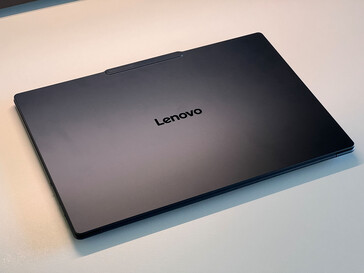
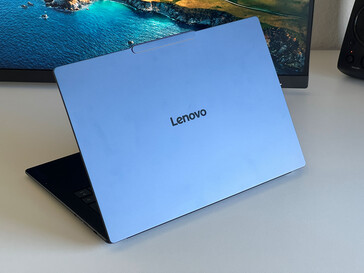
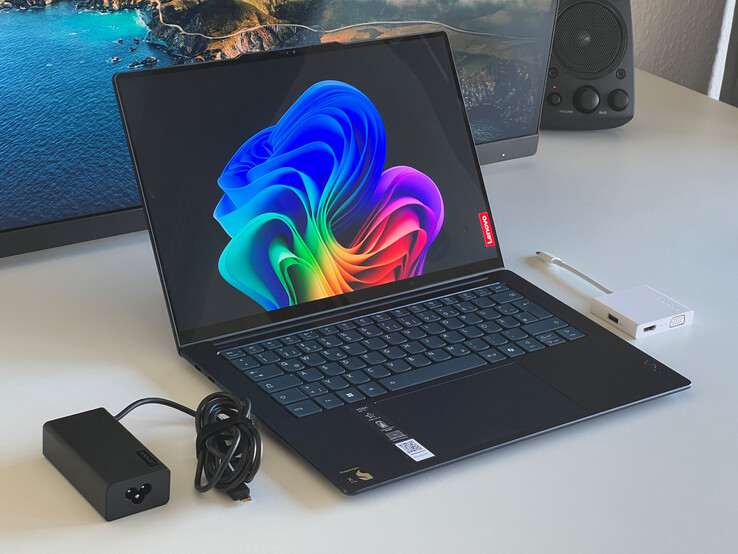






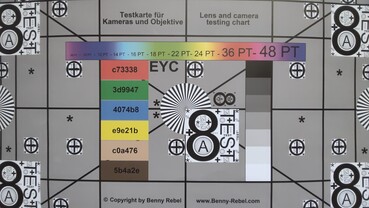

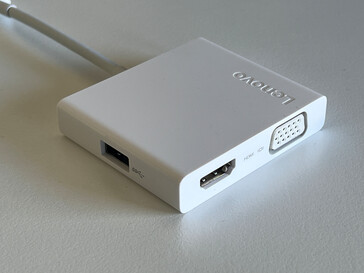
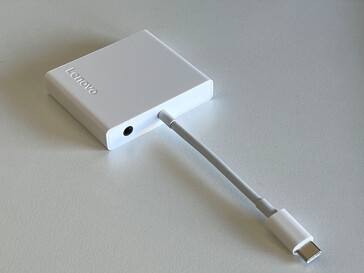

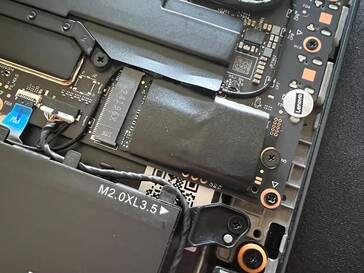
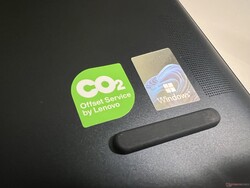
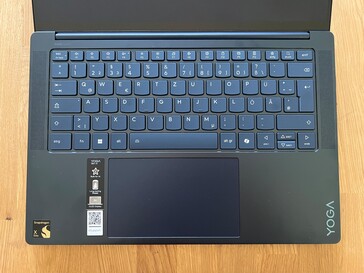
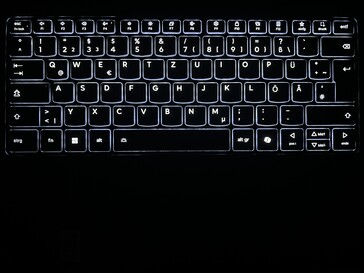
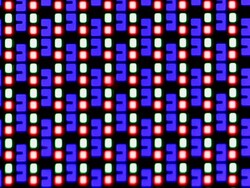
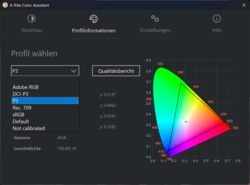
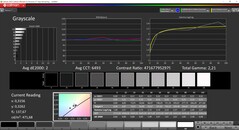
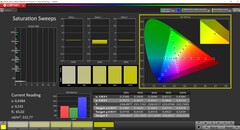

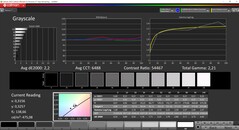

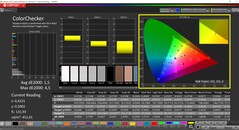

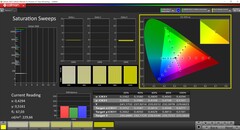
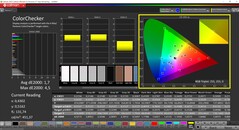
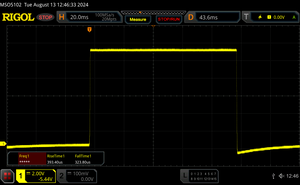
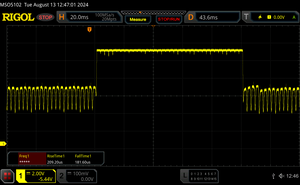
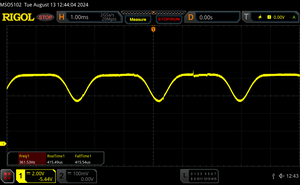






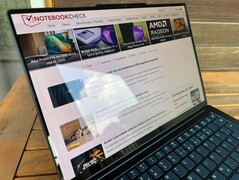
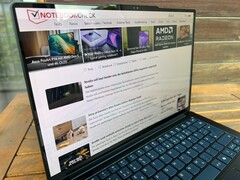
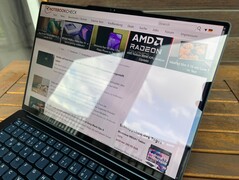
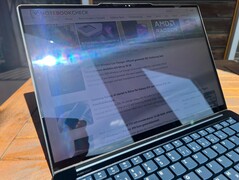

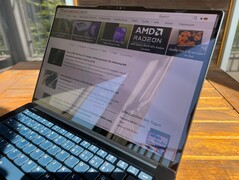


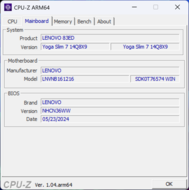
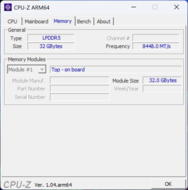
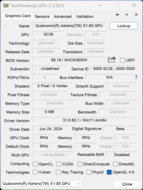



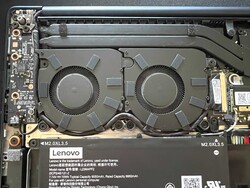
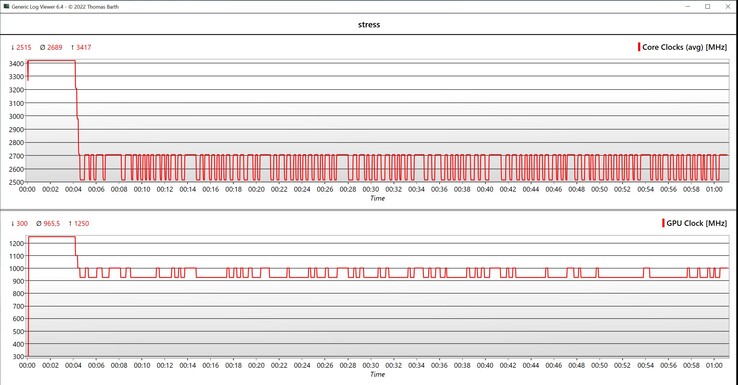
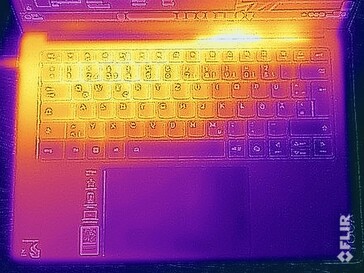
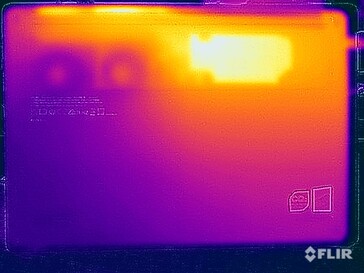
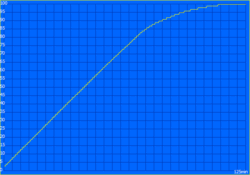

 Total Sustainability Score:
Total Sustainability Score: 